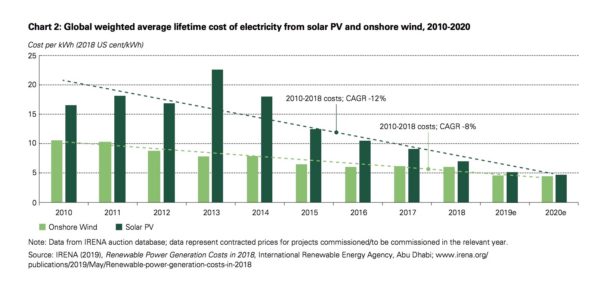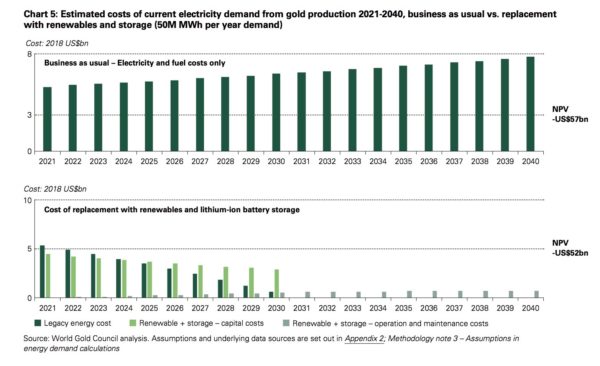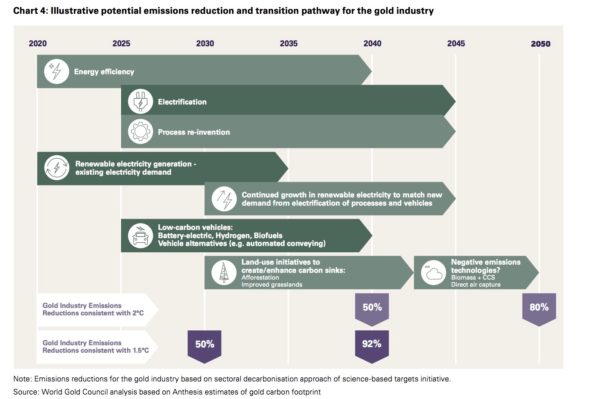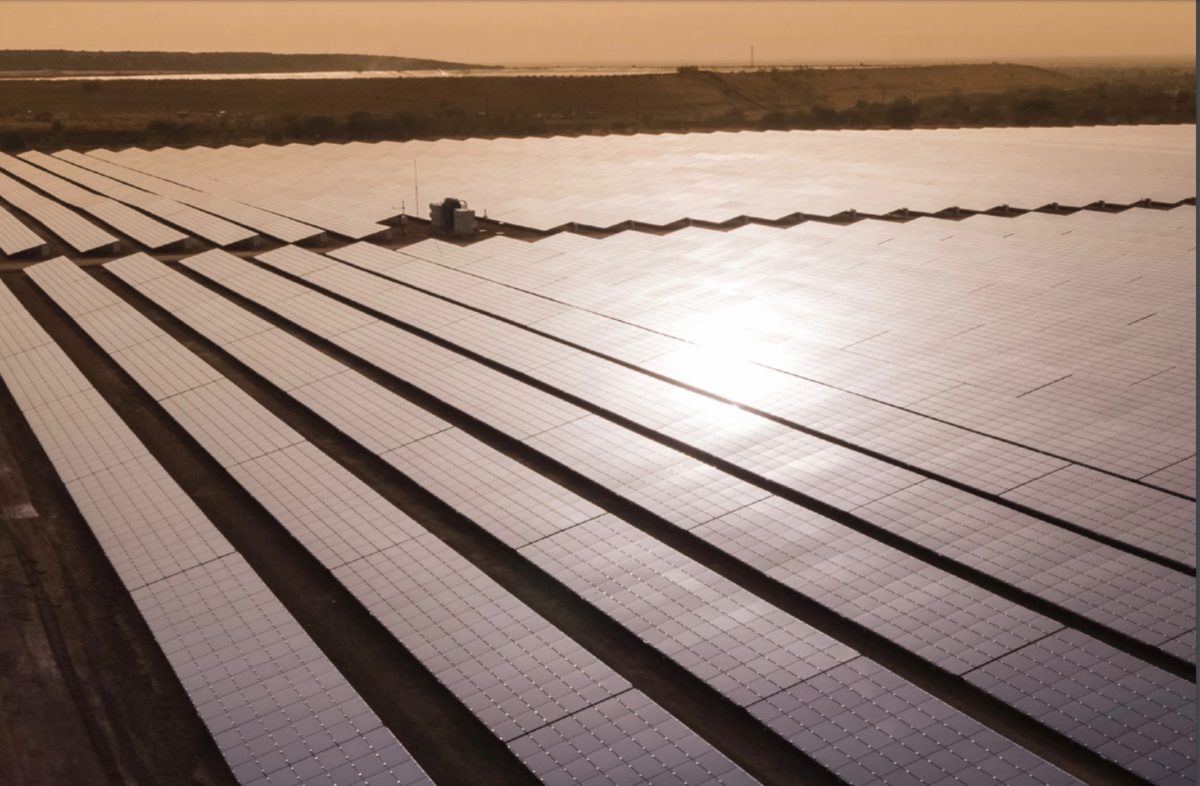The World Gold Council recently released the findings of an extensive research project entitled “Gold and climate change: Current and future impacts” (Report) which builds on previous research in 2018 to profile the impacts of climate change on the industry. In this analysis, the World Gold Council looks at ways to aureate the industry’s carbon footprint with sunlight.
Mining is well known as an industry with a large carbon footprint. However, the industry is moving toward sustainable practices, especially at the level of extraction and production, where energy and fuel use can be transitioned to renewable sources like solar.
“Costs for renewable energy have reduced rapidly and consistently over the past decade,” said the Report, “driven down with the huge increase in deployment. Globally, between 2010 and 2018, contracted levelised (life-time) costs per kWh for solar PV and onshore wind fell by 12% and 8% per year, respectively.”

The Report identified extraction and production as the most energy thirsty sectors in the industry. However, these are also sectors easily transitionable to renewables like solar PV. Moreover, this transition to renewables and storage is easier and quicker than a move to grid electricity. Finally, and especially given the remote locations mines tend to be located in, the mining sector acknowledges “there is a clear business case for the rapid replacement of diesel power with renewables.” Diesel generation is no longer feasible with the affordability of renewables brought about by falling costs and easy maintenance.

The Report made specific mention of the Agnew Gold Mine in Western Australia. The Agnew Gold Mine has installed a solar (4 MW), wind (18 MW), battery (13 MW/4 MWh) and gas (16 MW) microgrid with the support of $13.5 million from the Australian Renewable Energy Agency (ARENA). The micro-grid can provide up to 54% of the mine’s electricity needs, abating some 40,000 tones of CO2 annually.
The World Gold Council encourages renewable uptake and has even produced an emissions reductions timeline for the gold industry based on sectoral decarbonisation.

Of course, the gold mining industry is not the only mining sector looking to renewables to cut both emissions and expenses. ARENA is also helping to fund a grid-connected wind, solar and lithium-ion battery project in Port Gregory, near Kalbarri, to meet the energy needs of the nearby garnet mining and processing plant run by GMA Garnet.
The DeGrussa project at Sanfire’s copper and gold mine site in Western Australia boasts the country’s largest solar PV installation at a mine site, a hybrid system comprising a 10.6 MW solar facility coupled with a 6 MWh battery integrated with an existing diesel generator.
Other notable off-grid installations in the Australian mining sector include: a 7.3 MW solar array and 2 MW/1 MWh battery at the Granny Smith gold mine in Western Australia’s Eastern Goldfields region, a 3 MW solar farm at the Cannington silver and lead mine in north-west Queensland, and a 6.7 MW solar PV array at the Nova mine in Western Australia.
This content is protected by copyright and may not be reused. If you want to cooperate with us and would like to reuse some of our content, please contact: editors@pv-magazine.com.









By submitting this form you agree to pv magazine using your data for the purposes of publishing your comment.
Your personal data will only be disclosed or otherwise transmitted to third parties for the purposes of spam filtering or if this is necessary for technical maintenance of the website. Any other transfer to third parties will not take place unless this is justified on the basis of applicable data protection regulations or if pv magazine is legally obliged to do so.
You may revoke this consent at any time with effect for the future, in which case your personal data will be deleted immediately. Otherwise, your data will be deleted if pv magazine has processed your request or the purpose of data storage is fulfilled.
Further information on data privacy can be found in our Data Protection Policy.